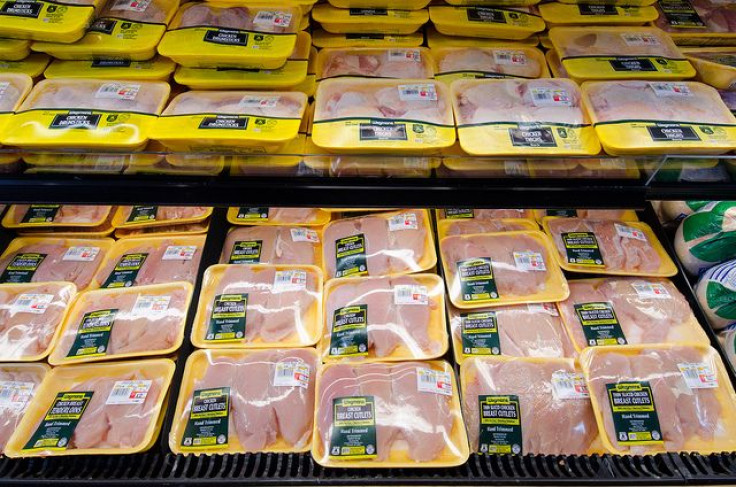Roosters’ Fertility Problem Raises Chicken Prices: How To Stay Safe When Buying Meat On Sale

A genetic disorder is causing the world’s largest chicken breeder to raise its prices because the roosters needed to mate are experiencing fertility problems, Reuters reports. This price hike is but another in a long string of gradual increases, making affordable poultry harder to find.
But the American public doesn’t have to shirk its entire chicken consumption over an increase of a few cents per pound. Buying meat that is on sale, often referred to as “used meat” or the “manager’s special,” can offer the same benefits of full-priced meat that still has a week before it hits the sell-by date.
Breeder birds, as they’re known in the poultry industry, are in short supply. German-based Aviagen Group supplies more hens and roosters than any other company, and its most common breed, the standard Ross male, is bred for nearly 25 percent of the country’s entire chicken population. Sanderson Farms, the third-largest U.S. poultry producer and one of Aviagen's largest customers, told Reuters about 17 percent of eggs that were the combination of Aviagen hens and Ross males failed to hatch. Normal hatch failure rates hover around 15 percent.
While this investigation persists, prices get caught in the crossfire. Added production costs force per-pound rates to go up — one measure shows as much as 50 cents on a boneless, skinless chicken breast that otherwise goes for $2.02 a pound. In an effort to avoid these costs, companies are even going so far as to incubate eggs that have already been discarded, as a means to salvage existing stock.
'Used Meat' Instead
Don’t let the name scare you. Used meat is just as unused as any other meat product you’d buy from the perimeter of your supermarket. The only difference is that you don’t have the luxury of keeping it thawed as long. Typical sell-by dates for poultry advise consumers not to wait eating it or freezing it a week after purchase. Meat that is on sale may give you a day, two if you’re lucky.
All this means is that unless you’re cooking it that night, store it in the freezer once you get home. Freezing poultry won’t kill any bacteria that happen to live on the surface, but it will stop that bacteria from multiplying. Meat that stays in the freezer will tend to stay fresh for up to three months — the closer to zero degrees you can get your freezer, or below, the better.
When you’re ready to cook the chicken, thaw it in the refrigerator and handle it on clean services during preparation. Meat that is well past its sell-by date — poultry more so than certain cuts of beef — needs to be cooked all the way through, to 165 degrees, to kill any Salmonella or other campylobacter. Invest in a meat thermometer if you plan on opting for used meat more often.
And if you decide to preserve some of the chicken for later use, remember to consider each dish towel or cutting board you used during preparation. Julie Albrecht, food safety specialist in the University of Nebraska, Lincoln, recommends adding a simple bleach solution to minimize bacteria risk. "Dish towels should be changed frequently anyway,” she told the High Plains Journal. If those options aren’t available, she says, “paper towels could be used.”



























